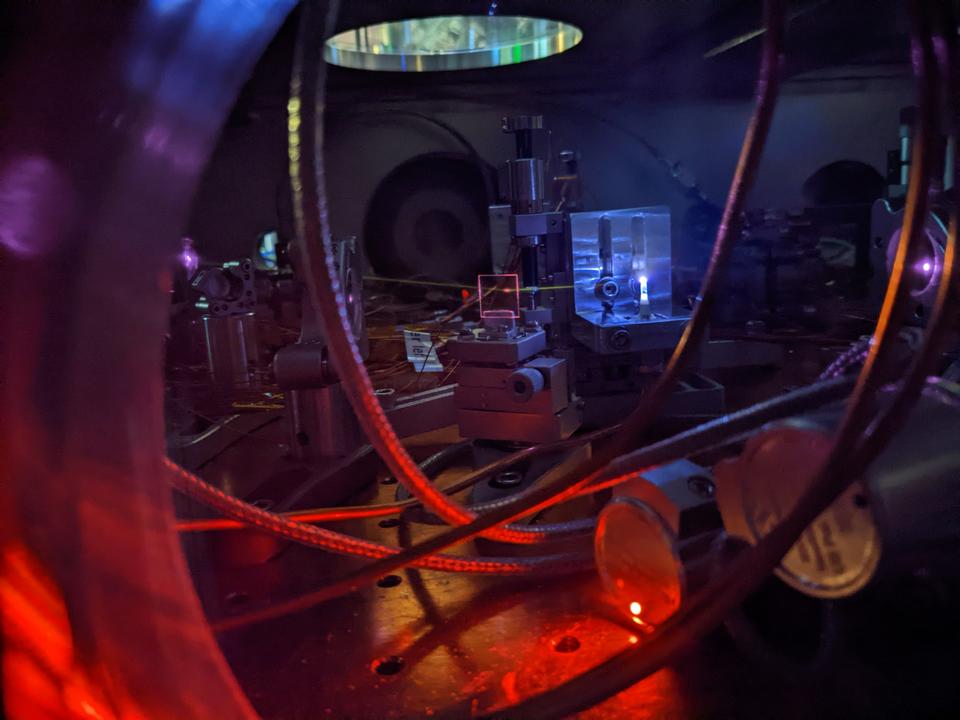日本語で読みたい方は、 google chromeで開き、
画面上で右クリックをして、「日本語に翻訳」をクリックしてください
September 4, 2024
- Nuclear clocks would measure time based on changes inside an atom’s nucleus, which would make them less sensitive to external disturbances and potentially more accurate than atomic clocks.
- These clocks could lead to improved timekeeping and navigation, faster internet speeds, and advances in fundamental physics research.
- Scientists have demonstrated key components of a nuclear clock, such as precise frequency measurements of an energy jump in a thorium-229 nucleus.
 A powerful laser shines into a jet of gas, creating a bright plasma and generating ultraviolet light. The light leaves a visible white line as it interacts with leftover gas in the vacuum chamber. This process helps scientists precisely measure the energy needed to excite the thorium-229 nucleus, which is the core of a future nuclear clock.
A powerful laser shines into a jet of gas, creating a bright plasma and generating ultraviolet light. The light leaves a visible white line as it interacts with leftover gas in the vacuum chamber. This process helps scientists precisely measure the energy needed to excite the thorium-229 nucleus, which is the core of a future nuclear clock.Credit: Chuankun Zhang/JILA
An international research team led by scientists at JILA, a joint institute of the National Institute of Standards and Technology (NIST) and the University of Colorado Boulder, has demonstrated key elements of a nuclear clock. A nuclear clock is a novel type of timekeeping device that would use signals from the core, or nucleus, of an atom. The team used a specially designed ultraviolet laser to precisely measure the frequency of an energy jump in thorium nuclei embedded in a solid crystal. They also employed an optical frequency comb, which acts like an extremely accurate light ruler, to count the number of ultraviolet wave cycles that create this energy jump. While this laboratory demonstration is not a fully developed nuclear clock, it contains all the key technology for one.
Nuclear clocks could be much more accurate than current atomic clocks, which provide official international time and play major roles in technologies and applications such as GPS and internet synchronization, and in financial transactions. For the general public, this development could ultimately mean even more precise navigation systems (with or without GPS), faster internet speeds, more reliable network connections, and more secure digital communications.
Beyond everyday technology, nuclear clocks could improve tests of fundamental theories for how the universe works, potentially leading to new discoveries in physics. They could help detect dark matter or verify if the constants of nature are truly constant, allowing for verification of theories in particle physics without the need for large-scale particle accelerator facilities.
Laser Precision in Timekeeping
Atomic clocks measure time by tuning laser light to frequencies that cause electrons to jump between energy levels. Nuclear clocks would use energy jumps within an atom’s tiny central region, known as the nucleus, where particles called protons and neutrons cram together. These energy jumps are much like flipping a light switch. Shining laser light with the exact amount of energy needed for this jump can flip this nuclear “switch.”
この情報へのアクセスはメンバーに限定されています。ログインしてください。メンバー登録は下記リンクをクリックしてください。

